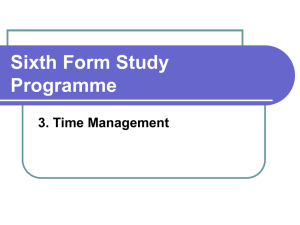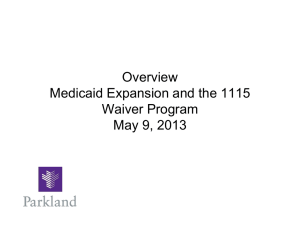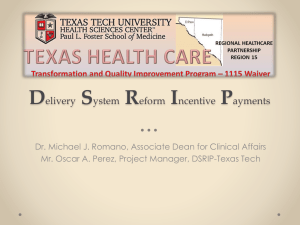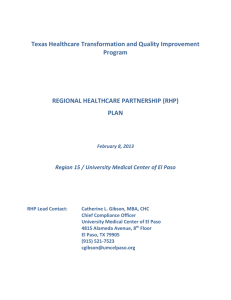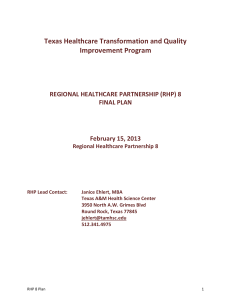Increasing Utilization of Well Child Exams
advertisement
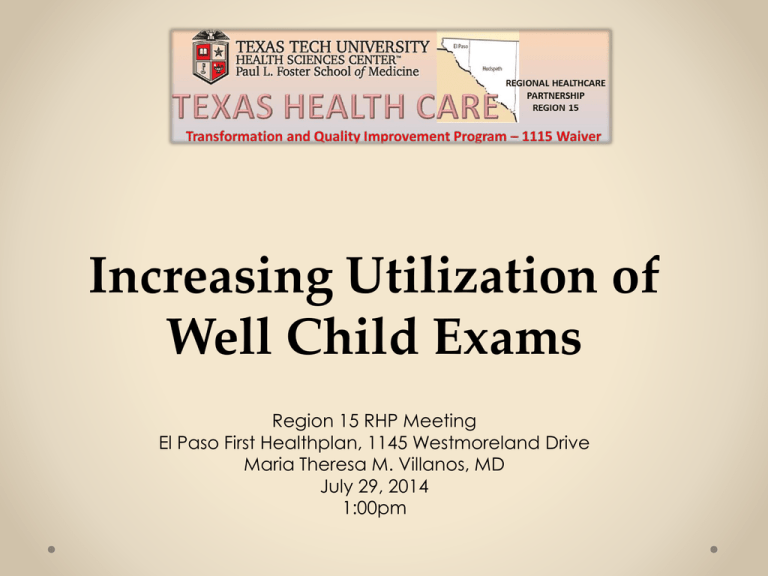
Increasing Utilization of Well Child Exams Region 15 RHP Meeting El Paso First Healthplan, 1145 Westmoreland Drive Maria Theresa M. Villanos, MD July 29, 2014 1:00pm Introduction Completion of nationally recommended preventive pediatric health care (Periodicity) examinations in our population is challenging at all age ranges, and particularly after the 12 month visit. A number of reasons may contribute to this Parental perceptions that “everything is all right” Transportation challenges The need to take off work and remove the child from school or day care Parental perceptions that the health maintenance examinations of older children are not important and not worth the time Introduction The populations we most commonly serve, Hispanics with low household educational and higher levels of poverty, at are particular risk of not receiving health maintenance exams Eighty-nine percent of the patients we treat in our after-hours acute care walk in clinic are uninsured, or have Medicaid or CHIP Description of the Project Utilize a “just in time” delivery model to offer periodic health exams visit to all eligible children in the family of an index patient who presents to the walk-in clinic. We do not intend to disrupt the traditional provider – patient relationship where one exists (and the parent is regularly accessing preventative care.) Description of the Project Rather we are identifying children who have fallen off the recommended pathway, are not receiving services they are eligible for, and use the acute care visit as opportunity to both provide the screening examination and try to reestablish the patient with a Primary Care Provider for subsequent exams. Re-establishing such a relationship may result in the child receiving future recommended periodicity exams and also reduced use of acute care services in the future. Description of the Project Goal: To increase the number of children who receive appropriate health periodicity exams as defined by the American Academy of Pediatrics Bright Futures Recommendations and are current in their immunization status. Expansion of pediatric primary care by providing health periodicity exams in conjunction with a visit to an acute care walk in clinic to eligible patients and their siblings Description of the Project Departments Involved: PLFSOM Department of Pediatrics, Ambulatory Division Description of the Project DY3 Milestones Milestone: Increase access to primary care capacity. Metric: Documentation of increased number of unique patients. Goal: We will increase the number of unique patients who receive a Health Maintenance Exam in the walk in-clinic to 400 Data Source: EMR, Electronic Scheduling Quality improvement milestones Metric: Participate in semiannual face-to-face meetings or seminars organized by the RHP Data Source: attendance records, copies of presentations made. Description of the Project DY4 Milestones Milestone: Increase access to primary care capacity. Metric: Documentation of increased number of unique patients. Goal: We will increase the number of unique patients who receive a Health Maintenance Exam in the walk in-clinic to 600 Data Source: EMR, Electronic Scheduling Quality improvement milestones Metric: Participate in semiannual face-to-face meetings or seminars organized by the RHP Data Source: attendance records, copies of presentations made. Description of the Project DY5 Milestones Milestone: Increase access to primary care capacity. Metric: Documentation of increased number of unique patients. Goal: We will increase the number of unique patients who receive a Health Maintenance Exam in the walk in-clinic to 750 Data Source: EMR, Electronic Scheduling Quality improvement milestones Metric: Participate in semiannual face-to-face meetings or seminars organized by the RHP Data Source: attendance records, copies of presentations made. Benefits to the Community Improvement of utilization rates of preventative, health screening and maintenance exam in a population burdened with significant health care disparities Reestablish the patient with a Primary Care Provider for subsequent exams Providing valuable health information to families such as disease prevention and anticipatory guidance Reduction of vaccine-preventable diseases Progress Milestone Progress: Documentation of increased number of patients who participated in the project Data Unique Patients who received a Well-Child Exam in the Acute Care Clinic DSRIP GROUPING Oct ALL OTHERS 7 10 6 2 5 17 12 19 MEDICAID 17 9 3 9 20 48 26 UNINSURED 0 0 0 0 1 0 0 Total Patients 24 19 9 11 26 65 % Uninsured 0% 0% 0% 0% 4% % Medicaid 71% 47% 33% 82% 77% Nov Dec Jan Feb Mar Apr May Jun Jul Aug Sep Total 14 23 37 23 175 46 29 34 108 83 432 0 0 0 0 0 1 38 65 43 57 145 106 608 0% 0% 0% 0% 0% 0% 0% 0% 74% 68% 71% 67% 60% 74% 78% 71% DY 2 DSRIP GROUPING Oct Nov Dec Jan Feb Mar Apr May Jun Jul Aug Sep Total DY 3 ALL OTHERS 24 28 27 48 38 21 26 26 11 249 MEDICAID 106 124 115 134 79 54 91 62 42 807 UNINSURED 0 0 0 0 0 0 0 0 0 0 Total Patients 130 152 142 182 117 75 117 88 53 1056 % Uninsured 0% 0% 0% 0% 0% 0% 0% 0% 0% 0% % Medicaid 82% 82% 81% 74% 68% 72% 78% 70% 79% 76% 73% Increase Thus Far Innovations Offered more hours Tablet Give-Away Incentives Health Care Info loaded Once a month Extra staff assigned Quality Improvements Improvements to processes through Value Stream Mapping (VSM) and Rapid Cycle Improvements, PDSA’s Next Presentation Discuss Category-3 outcomes (data) Description of the process Milestone Continued Progress Risk Areas Mitigated Continuous Quality improvements





